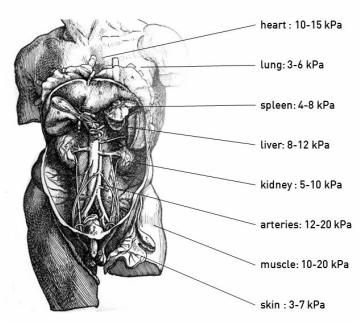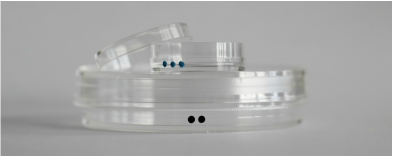簡單介紹
PrimeCoat series The ExCellness PrimeCoat series is designed specifically to provide a biomimetic cell culture environment that improves cell characteristics and phenotype in laboratory application
產(chǎn)品描述
Your body is soft. Why would you grow your cells on hard plastic material?

Scientific publications
訂貨信息如下(備有現(xiàn)貨):
Simple, biomimetic tissue culture devices.
Think soft!
The physical properties of the substrate on which cells are grown profoundly influences the culture, as recent scientific data demonstrates. Substrate elasticity is as powerful to determine cell behavior and identity as is their chemical milieu.
Grow soft!
ExCellness provides non-degradable tissue culture surfaces with the elasticity of human tissue, ranging from the stiffness of bone to the softness of brain. Culturing your cells on our adapted culture substrates makes them "FEELING AT HOME"!
Enjoy soft!
Culturing your cells on ExCellness tailored culture substrates allows to:
Our solution : biomimetic, elastic cell culture substrates
Our technology is based on the fact that the softness of the culture surface influences cell performance. We offer culture dishes with elastic surfaces that imitate the physical properties of tissues in the human body, ranging from the stiffness of bone to the softness of brain tissues.
The physical properties of the substrate on which cells are grown profoundly influences the culture, as recent scientific data demonstrates. Substrate elasticity is as powerful to determine cell behavior and identity as is their chemical milieu.
Grow soft!
ExCellness provides non-degradable tissue culture surfaces with the elasticity of human tissue, ranging from the stiffness of bone to the softness of brain. Culturing your cells on our adapted culture substrates makes them "FEELING AT HOME"!
Enjoy soft!
Culturing your cells on ExCellness tailored culture substrates allows to:
Our solution : biomimetic, elastic cell culture substrates
Our technology is based on the fact that the softness of the culture surface influences cell performance. We offer culture dishes with elastic surfaces that imitate the physical properties of tissues in the human body, ranging from the stiffness of bone to the softness of brain tissues.
PrimeCoat series
The ExCellness PrimeCoat series is designed specifically to provide a biomimetic cell culture environment that improves cell characteristics and phenotype in laboratory applications.
Key features
Biomimetic cell culture substrates at reach
PrimeCoat series combines simplicity and accessibility:
Biomimetic cell culture substrates at reach
PrimeCoat series combines simplicity and accessibility:
ExCellness in peer reviewed publications
In the following peer-reviewed publications, ExCellness biomimetic cell culture devices have been used or cited:
In the following peer-reviewed publications, ExCellness biomimetic cell culture devices have been used or cited:
Your body is soft. Why would you grow your cells on hard plastic material?

In physics terms, conventional tissue culture plastic dishes are some 10'000 KiloPascal (kPa) stiff whereas most tissues in our body are four orders of magnitude softer (1-50 kPa). It emerges as a general theme that different cell types prefer a culture substrate elasticity which resembles the stiffness of their origin tissue:
-Neuronal cells grow best on brain-soft hydrogels which eliminate other, contaminating cells of the tissue preparation.
-Fibroblasts and liver cells keep their 'tissue-like' character on soft hydrogels but become diseased on plastic.
-Muscle precursor cells in culture differentiate best into functional muscle fibers on muscle-stiff hydrogels.
-Cancer cells like soft but dislike stiff hydrogels.
Amazingly, the appropriate elastic cell culture substrate alone differentiates mesenchymal stem cells into lineages that are needed for regenerative medicine (bone, cartilage, muscle, neurons) by simply mimicking the appropriate tissue stiffness in culture.
-Neuronal cells grow best on brain-soft hydrogels which eliminate other, contaminating cells of the tissue preparation.
-Fibroblasts and liver cells keep their 'tissue-like' character on soft hydrogels but become diseased on plastic.
-Muscle precursor cells in culture differentiate best into functional muscle fibers on muscle-stiff hydrogels.
-Cancer cells like soft but dislike stiff hydrogels.
Amazingly, the appropriate elastic cell culture substrate alone differentiates mesenchymal stem cells into lineages that are needed for regenerative medicine (bone, cartilage, muscle, neurons) by simply mimicking the appropriate tissue stiffness in culture.
ExCellness dishes are cell culture device with a soft polymer surface, exhibiting an elasticity that is designed to closely resemble the physical properties of body tissue. The basis of our product is a sterile, transparent, elastic cell culture substrate that makes cells 'feeling at home'.
|
ExCellness has gained years of experience in generating stable, elastic cell culture substrates with a wide range of stiffness/softness (2~100 kPa). With our expertise, we can provide a large series of products that retain all advantages of conventional plastic culture vessels but additionally offer a biomimetic environment through a defined elastic component.
|
Scientific publications


產(chǎn)品留言
標題
聯(lián)系人
聯(lián)系電話
內(nèi)容
注:1.可以使用快捷鍵Alt+S或Ctrl+Enter發(fā)送信息!
2.如有必要,請您留下您的詳細聯(lián)系方式!
2.如有必要,請您留下您的詳細聯(lián)系方式!



